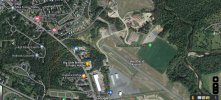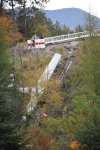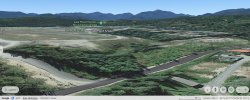1 in 175 seems shockingly high.
A couple questions if I may...just out of curiosity.
How many total aircraft on the registry?
How many total accidents?
Would this include an incident where a drunk driver drove through a hangar and left his car parked on a Comanche? Or is this strictly moving incidents?
Here's the aircraft vs. accident data I used for the computation:

"All" is the total aircraft on the registry as of the end of the given year. The year itself is calendar year, not fiscal year (the FAA publishes figures based on fiscal year).
It's interesting to note that one can get different numbers of accidents per year depending on what source one uses. For 2021, for example, if you use the online tool, the total comes out to over 1700, vs. the 1635 shown above. I extract my numbers from the NTSB accident database I downloaded on 1 December 2022.
Accidents which receive an NTSB number (e.g., "NYC08CA089") and are included in the NTSB accident database are counted. I presume that these are considered accidents because the criteria in NTSB Part 830 are met.
As I mentioned earlier, this includes some foreign accidents, accidents in the US involving foreign-registered aircraft, and unregistered air vehicles. In addition, separate accidents occurring to a given aircraft will also be counted separately.
Certainly, there are some silly accidents in the database, but I suspect the number of stall-spin cases FAR exceeds the instances where a drunk driver drove through a hangar. In any case, the drunk-driving-into-the-hangar incident would not be considered a reportable accident, per NTSB 830.2:
Aircraft accident means an occurrence associated with the operation of an aircraft which takes place between the time any person boards the aircraft with the intention of flight and all such persons have disembarked, and in which any person suffers death or serious injury, or in which the aircraft receives substantial damage.
If the drunk drove into an *occupied* aircraft, then yes, it would be assigned an NTSB number. For example, a case where a guy with a fork lift drove into a 172 (ANC00LA005).
Should also point out that the figures I posted are based on *all registered aircraft being active*. The a recent annual FAA General Aviation Survey says that less than 80% of the single-engine piston-powered aircraft in the registry are active. Include THAT, and the rate drops from one accident per 175 aircraft to one in 140.
Just remember: It ain't random. You can reduce your risks by trying to fly safe.
Ron Wanttaja






